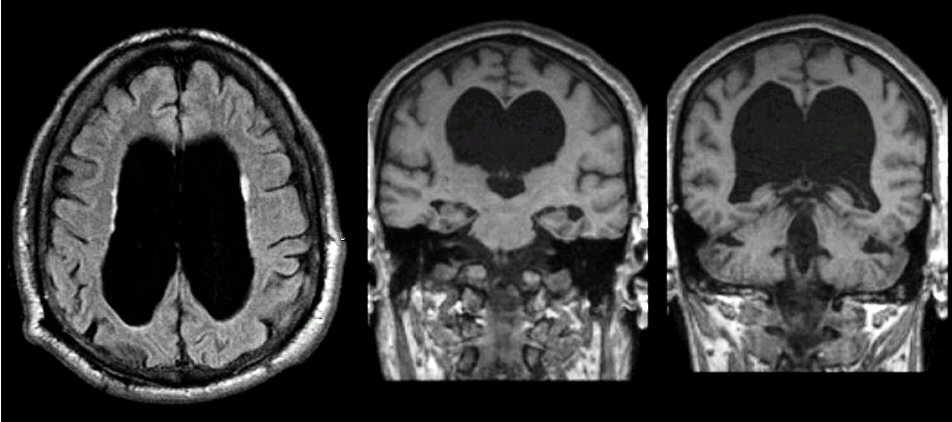
|
A 45 year-old man presented with gait difficulty and falling. He had a severe head injury ten years earlier. |

![]()
![]()
![]()
| Communicating Hydrocephalus:
(Left) Flair axial MRI; (Middle and Right) T1-weighted coronal MRIs.
Note that all the ventricles are dilated including the third and fourth
ventricles. Hydrocephalus is recognized as enlarged ventricles out of
proportion to the cerebral atrophy (i.e., hydrocephalus ex vacuo). Hydrocephalus is recognized as enlarged ventricles out of proportion to the amount of cerebral atrophy. Communicating hydrocephalus occurs when the ventricular system is in continuity with the subarachnoid space and all the ventricles are enlarged, including the fourth ventricle. In nearly all cases, it results from impaired CSF absorption. Rarely, hydrocephalus occurs from excess CSF production. One presentation of communicating hydrocephalus is that of normal pressure hydrocephalus (NPH), wherein the opening pressure is within normal range, but too high for the size of the ventricles. Remember LaPlace's Law which states that wall tension (force) is proportional to both pressure and radius; thus, if the ventricles are enlarged (increased radius) even in the setting of normal pressure, then the wall tension is increased resulting in compression of adjacent brain structures. NPH presents with the classic triad of impaired gait, urinary incontinence, and mental status changes. It is an important disorder to recognize as it is potentially treatable by shunting. |
Revised
08/18/06
Copyrighted 2006. David C Preston